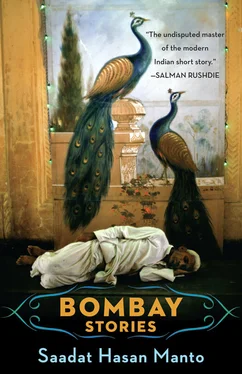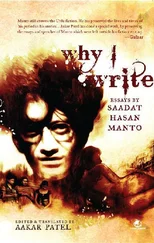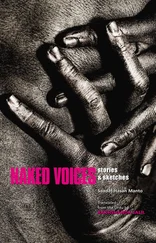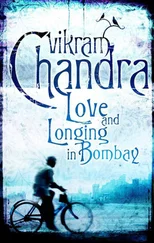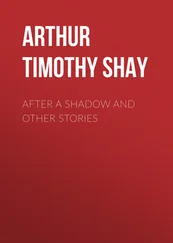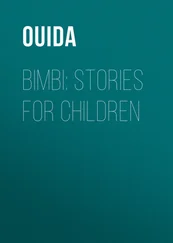MANTO’S BOMBAY
Bombay was where the motion picture made its first appearance on the subcontinent when the French Lumière brothers’ Cinématographe was shown on July 7, 1896 at the upscale Watson’s Hotel. 57The honour of having made the first Indian film goes to Hari Bhatvadekar whose two short films — one of a choreographed wrestling bout and another of a man training a monkey — were shown in late 1899. 58Bombayites would have to wait more than thirteen years for the first feature-length Indian motion picture to be released, when D.G. Phalke unveiled the mythological film Raja Harishchandra in May 1913. 59In order to complete his film, Phalke mortgaged his life insurance policy to afford travelling to London to buy equipment, 60converted his kitchen into a makeshift laboratory, 61and, according to Manto, even sold off his wife’s jewellery. 62He also faced the difficulty of finding a woman to play the role of King Harishchandra’s wife, as all the women he asked refused due to the impropriety they felt that acting involved, and Phalke was forced to give the role to a man. 63Phalke would go on to make twenty mythological films and ninety short films, 64becoming the undisputed champion of the silent era and the consensus ‘father’ of Indian cinema.
The next landmark in the history of the Indian film industry came in 1931 when Light of the World became the country’s first feature-length sound film. 65The Imperial Film Studio — the first studio at which Manto worked after coming to Bombay — claimed credit for this film, and their 1937 film Village Girl was the first feature-length colour film in the subcontinent. 66The 1930s saw the first studio competition arise. Not only did the Imperial Film Company figure prominently on the scene, but the Prabhat Film Company and Bombay Talkies also made names for themselves. 67Prabhat was established in 1929 in Kolhapur though the studio was moved four years later to nearby Pune. Set up by V. Shantaram, K.R. Dhaiber, S.B. Kulkarni, and S. Fatehlal, the studio had several hits in the thirties, including The Churning of the Oceans (1934) and The Immortal Flame (1936). 68In addition to the progressive social content of their films, the studio was known for the technical qualities of its products. The four founding members, as Manto notes, ‘all had the same desire, and that was to outstrip everyone else in matters of art and technique.’ 69Bombay Talkies came into being five years after Prabhat and featured the husband — wife pair of Himanshu Rai and the beautiful Devika Rani, the former working as producer/director and the latter starring in films, 70including the popular Untouchable Girl . 71Furthermore, their studio is noteworthy from a historical perspective, as it employed three men who would later come to rank among the forefront of actors in the entire history of Indian cinema: Ashok Kumar (then a laboratory assistant), Dilip Kumar (then and afterwards an actor), and Raj Kapoor (then a clapper). 72
The burgeoning film industry aside, Manto’s Bombay was a city of economic opportunity, attracting people from all over India and indeed from around the world. The census of 1921 revealed that an amazing eighty-four per cent of its work force came from outside the city. 73These workers were men from villages and towns, thinking they would come to the city for a while to earn money to send back home. Often, they decided to stay for good, sending for their families and other relatives to join them. These immigrants developed their own lifestyle, which has now long since become a part of the Bombay myth. The tightly confined chawls constructed by the textile mills to house their employees were their environs, and it was here that two of the typical characters of Bombay, the gangster and the prostitute, came about.
A chawl can best be described as tenement housing. The rooms were tiny and without running water. Common lavatories and washrooms were located at the end of corridors, or as in ‘Ten Rupees’, the buildings were entirely without such facilities. Access to the water taps was a serious issue, especially in the summer when the water supply often failed. Getting water was the cause of much worrying and worse, and the communal water taps brought people together who would have been better kept apart. Sarita, a teenage prostitute, is the main character in ‘Ten Rupees’. Manto writes about the tense encounters that could take place around the taps: ‘But when Tukaram harassed Sarita by the water spigot one early morning, Sarita’s mother started screeching at Tukaram’s wife, “Why can’t you keep track of that dirty rat? I pray to God he goes blind for eyeing my little girl like that.” ’
People jammed into the chawls’ rooms. The 1930s saw the textile mills begin multiple shifts, and workers often rotated in and out of the chawls’ rooms just as they replaced each other at the factory. The men returned to the chawls to collapse upon their mats, their peers sleeping right next to them; when these men returned to the factory, others came to sleep in the spaces just vacated. In 1931 a full three quarters of Bombayites lived in such one-room accommodations. 74But sharing such tight quarters didn’t bring about a sense of solidarity within the ranks of the workers. Instead, indifference manifested itself, as Manto writes in ‘Ten Rupees’:
Sarita’s mother was always telling this story [of the death of her husband], but no one knew whether it was true. No one in the building felt any sympathy for her, perhaps because their lives were so difficult that they had no time to think about others. No one had any friends. Most of the men slept during the day and worked nights in the nearby factory. Everyone lived right on top of one another, and yet no one took any interest in anyone else.
The chawls’ overcrowding made maintaining order difficult. The police by themselves could not — or chose not to — serve as the main law enforcers, and so a new figure emerged, the ‘dada’, the Bombay hoodlum cum agent of the peace. A dada was at once a benevolent figure and one to be feared. Manto gives us two portraits of dadas, the extended one of Mammad Bhai in ‘Mammad Bhai’ and a briefer look at Dada Karim in ‘Hamid’s Baby’. The dada would help those living in the area where he ruled, even if it meant committing a crime to exact revenge and re-establish order. He had a reputation for violence, and his persona was built up through anecdotes, real and mythic, which exemplified his physical prowess, cunning, and keen eye for justice. He knew everything about his people, and he was expected to protect them. Mammad Bhai is feared for his ability in martial arts and his habit of wearing a razor-sharp knife beneath his waistband. But he is also a benefactor, making sure the sick get cured and the poor don’t get cheated, and protecting the women of the neighbourhood.
Bombay’s working world was a male one. In 1864 there were about 600 women for 1,000 men, and by 1930 the proportion of women had declined even further. 75If women worked, it was because their family was so poor that they needed the income, however slight. In 1931, only thirteen percent of women claimed employment, even though around two-thirds were of working age. 76Prostitution developed out of these conditions and did so on a scale unlike anywhere else in India, as the migration of unaccompanied males to the city met with destitute women forced to earn money by any means possible. In 1921 there were an estimated 30,000 to 40,000 prostitutes in the city. 77(Contemporary figures estimate there are now about 450,000 prostitutes, and yet these numbers are approximate and conceivably on the low side. 78) Manto saw how the unique social conditions of the city bred prostitution, and the figure of the prostitute became of considerable interest to him. In Bombay Stories , prostitutes of one type or another are featured in just about every story.
Читать дальше
